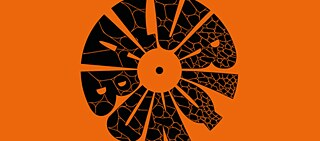Event series
Alur Bunyi

Introduction
As part of the performance series Anders Hören, or Listening Differently, Goethe-Institut Indonesien is proud to present Alur Bunyi, a musical series which will be held monthly starting from August at GoetheHaus, Jakarta. Alur Bunyi intends to create an anti-mainstream musical experience. The exciting performances will offer an underlying theme of juxtaposing electronic music with other genres.Our audience will also be able to enjoy featured performances from some of Indonesia’s best musicians, such as Gerald Situmorang, Jevin Julian, Patrick Hartono, Adra Karim and more, who will collaborate with German musicians Marcus Schmickler, DJ Linnea,and others for the series. We are pleased to invite all music fans and enthusiasts to join us on this one-of-a-kind journey.
Alur Bunyi
Alur Bunyi highlights the concept of electrical current flow that generates sounds and, in turn, music. In 1748, Cekooleh Václav Prokop Diviš (1698 – 1765) invented the first electrical keyboard, the “Denis d’or” (Golden Dionysus), which was able to mimic the sound of wind and string instruments. Due to poor documentation at the time, however, this claim remains debatable. In 1759 in France, Jean-Baptist Delaborde invented the “Clavecin électrique”, or the Clavecin Harpsichord – an instrument that used electricity to generate sounds. A keyboard instrument, it used static electricity to create vibrations of the metal components inside the harpsichord.Meanwhile, in 1874, Elisha Gray invented the “Musical Telegraph” and performed the “Telephone Concert” on 2 April 1977 at Steinway Hall, New York, where the instrument was played by pianist Fredric Boscovitz. The principles of the “Musical Telegraph” were later adopted and developed by other musical inventors.
The technological advancements that followed have created room for greater creativity in creating electrical instruments and inspired more experiments that explored the possibility of new sounds. After the invention of the drum machine, for example, musicians began to creatively reproduce the sounds of a drum by using their mouth as musical instrument – the sounds that we now call the beat box. Technology that stems from the current electricity flow also influences music and visual arts; today, music can be synchronized with moving visuals from background sounds.
The flow has not stopped. New technologies breed new sounds and creativity. The journey of electricity flow in music is captured in Alur Bunyi, an exhibition of sounds made possible by electrical power.
Aksan Sjuman
Alur Bunyi Curator, August 2017-December 2017